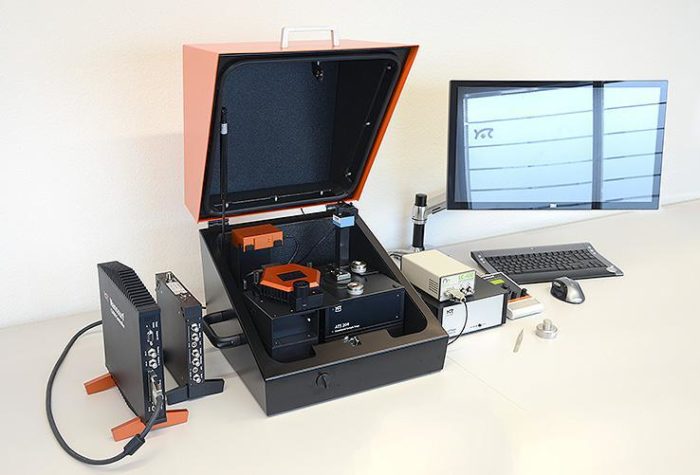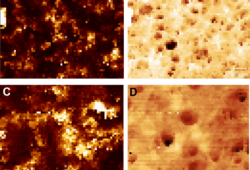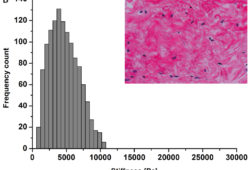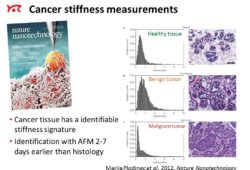FlexANA
Description
The ANA system is an automated solution for AFM-based nanomechanical analysis. It is designed to investigate the nanomechanical properties of materials such as cells, tissues, scaffolds, hydrogels, and polymers on multiple or large samples via force spectroscopy and force mapping in an intuitive and automated fashion.
ANA is compatible with Nanosurf’s FlexAFM scan heads: for materials science in the Flex-Axiom setup, as well as for life science applications in the Flex-Bio setup on an inverted microscope.
The combination of a straight-forward workflow-based experimental procedure in the ANA software, carefully selected hardware elements and motorization, and well-designed and thought-through control algorithms are hallmarks of the Flex-ANA system. Measurement locations on large or multiple samples are defined by simply clicking on an overview image with a large field-of-view that covers the entire accessible 32 mm × 32 mm sample area. Height differences of up to 5 mm can be easily overcome by the system, and many types of nanomechanical measurements, analyses and models can be performed and used!
During an experiment, the ANA system coordinates the movement of the scan head and the motorized XYZ translation stage (range: 32 mm × 32 mm × 5 mm) to cope with large sample height variations. The system can optionally be equipped with an additional 100-µm Z piezo for an extended force spectroscopy range. Thus, samples with macroscopic and microscopic roughness in the range of several millimeters and micrometers, respectively, as well as soft and sticky samples, can be easily addressed.
The ANA control software provides a Basic and an Expert user mode that are designed for different degrees of user experience and training:
In Basic mode, less experienced users are guided through the setup and calibration of the ANA system step-by-step. Optimized workflows guarantee that everything is done in the correct sequence, that nothing is forgotten, and that all is set properly.
In Expert mode, experienced users have more freedom in operating and setting up the system to suit their individual needs. Measurement parameters can also be prepared and stored by an expert, and then subsequently used by less experienced users in Basic mode.
Specification
Automated measurement and calculation of deflection sensitivity and spring constant
Spring constant calibration based on the Sader Method
Resonance frequency and Q-factor extraction from thermal noise power spectrum
Frequency range 0–5 MHz
utonomous measurements at defined locations
Automatic sample approach at each location with a maximum approach range of 5 mm
Real-time data analysis (elastic modulus in the range of 0.1 kPa – 20 GPa(1), adhesion, height, slope of contact region)
Map and histogram are available for each analysis parameter
ntegrated data browser with data preview
Various contact mechanics models (Hertz, Sneddon, DMT, 4-Sided Pyramid)
Upgrades
Fluid FM option (microfluidics cell and other small objects manipulation)

Consumables
https://micro-shop.pl/kategoria-produktu/afm/pudelka-na-probki-afm/
https://micro-shop.pl/kategoria-produktu/afm/sondy-do-trybu-dynamicznego/
https://micro-shop.pl/kategoria-produktu/afm/podloza/
https://micro-shop.pl/kategoria-produktu/afm/standardy-kalibracyjne-afm/
For more supplies, please visit our online store Micro-Shop.


















